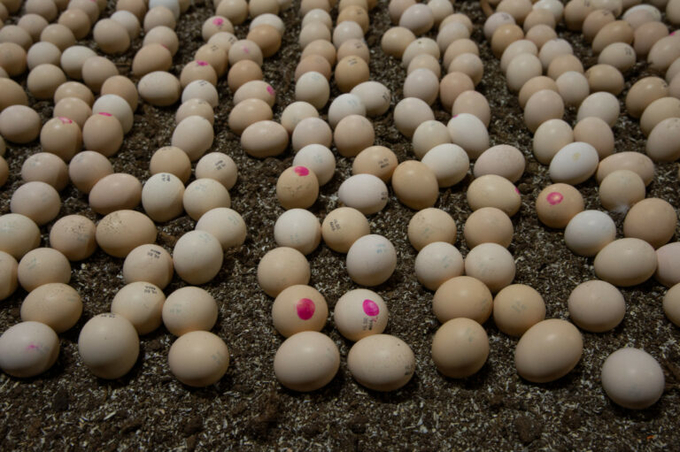May 20, 2025 | 04:55 GMT +7
May 20, 2025 | 04:55 GMT +7
Hotline: 0913.378.918
May 20, 2025 | 04:55 GMT +7
Hotline: 0913.378.918

The findings of a recent study show the potential of the hatch on-farm system as an effective management strategy for supporting the immune system and intestinal health in broiler chickens, which may significantly improve overall health and productivity. Photo: Twan Wiermans.
The hatch on-farm system provides early access to feed compared to hatch in hatchery (HH) systems.
The study, carried out at the Nutrition and Animal-Microbiota Ecosystems Laboratory, at KU Leuven, Belgium, looked at whether early feeding might promote favourable gut development, potentially improving intestinal health and broiler performance.
Previous studies have assessed the effects of hatch on-farm on chick quality, welfare and performance, and its impact on gut health, but the results have been inconclusive.
Study
The study involved a total of 560 Ross 308 male chicks reared until day 38, which were hatched either in a hatchery (n=280) or on-farm (n=280), with 14 replicates per system and 20 birds per pen.
Production parameters were periodically monitored with digestive and immune organ characteristics, intestinal permeability and histomorphology assessed on days 7, 14 and 38.
High throughput qPCR analysed 79 leal genes regarding barrier integrity, immune function, nutrient transporters, gut hormones, metabolism and oxidation.
Results
The results showed that chicks hatched on-farm had higher day-one bodyweights than HH chicks (P<0.01), but this advantage disappeared within the first week, with no subsequent performance differences found.
Hatched on-farm chickens demonstrated increased duodenal villus width on day 7 and 14 and increased ileal crypt depth and submucosal thickness on day 7 (P<0.05). Relative bursal weight was higher on day 14 (P=0.018) and tended to be higher on day 38 in HOF chickens (P=0.094).
Intestinal permeability remained unaffected (P>0.05), while HH chicks showed upregulation of gut barrier genes such as MUC5ac on day 7 and CLDN2 and MUC2 on day 14 (P<0.05). HH chicks also showed upregulation of nutrient transports including VDR on day 7 and SLC30A1 and SLC5A9 on day 38, and decreased expression of the appetite-suppressing hormone CCK on day 7 (P<0.05). Hatched on-farm chicks upregulated immune-related genes, including IL-8 on day 7, IL-6, IFN-γ, AVBD9 on day 14, and NOS2 on day 38 (P<0.05), and the oxidation gene HIF1A on day 38 (P=0.039).
(Poultryworld)
![Reducing emissions from rice fields: [Part 1] Farming clean rice together](https://t.ex-cdn.com/nongnghiepmoitruong.vn/608w/files/news/2025/05/05/z6509661417740_a647202949c539012a959e841c03e1d3-nongnghiep-143611.jpg)
(VAN) Growing clean rice helps reduce environmental pollution while increasing income, allowing farmers to feel secure in production and remain committed to their fields for the long term.
/2025/05/19/5136-1-144800_230.jpg)
(VAN) The Nghe An Provincial People's Committee has just approved the list of beneficiaries eligible for revenue from the Emission Reductions Payment Agreement (ERPA) in the North Central region for the year 2025.

(VAN) 14 out of 35 domesticated elephants in Dak Lak province have had their living conditions improved, with 11 of them currently participating in the non-riding elephant tourism model.

(VAN) Muong Nhe Nature Reserve hopes that being upgraded to a national park will lay the foundation for forest protection efforts to be carried out in a systematic, modern, and sustainable manner.
/2025/05/16/3923-2-171845_52.jpg)
(VAN) Lower costs, higher yields, and improved soil quality are outstanding benefits that soybeans bring when integrated into the crop rotation system.

(VAN) The 'For a Green National Environment' programme aims to promote a green lifestyle, support businesses in implementing ESG practices, and turn Net Zero commitments into concrete actions.

(VAN) Cold-barn systems efficiently manage environmental and temperature conditions, which aids in the prevention of respiratory diseases in pigs and protects them from the vectors that transmit African swine fevers.